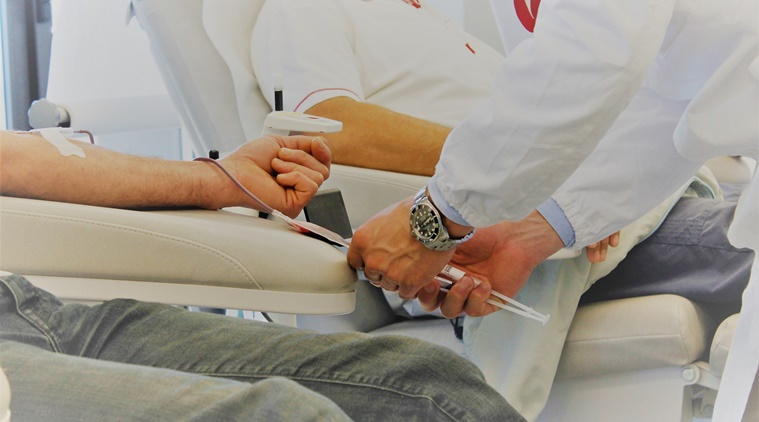Blood transfusion means infusing blood to a needy patient. Blood has components like red blood cells, white blood cells, platelets or clotting factors, and plasma or whole blood which can be transfused to the patient as whole or according to the need. There are five types of white blood cells which play different protective roles during infection control. Platelets helps in clotting blood during wounds and injuries, while plasma helps in controlling the electrolyte balance in body.
When a person comes with prescription for blood transfusion, first a tiny sample of blood is taken from him/her to confirm the prescription and test for other matching components. Once the findings have been obtained, the matching blood from storage is taken and infused into the patient depending on need.
Blood is donated by non-paid volunteers who have undergone level of checks before donation. The eligibility criteria are fixed, and only blood that is determined to be safe is used, says Dr Sangeeta Agarwal, Senior Consultant, Department of Transfusion Medicine, Fortis Memorial Research Institute, Gurugram who shares some important points to ensure a smooth blood transfusion process.






















 WhatsApp us
WhatsApp us